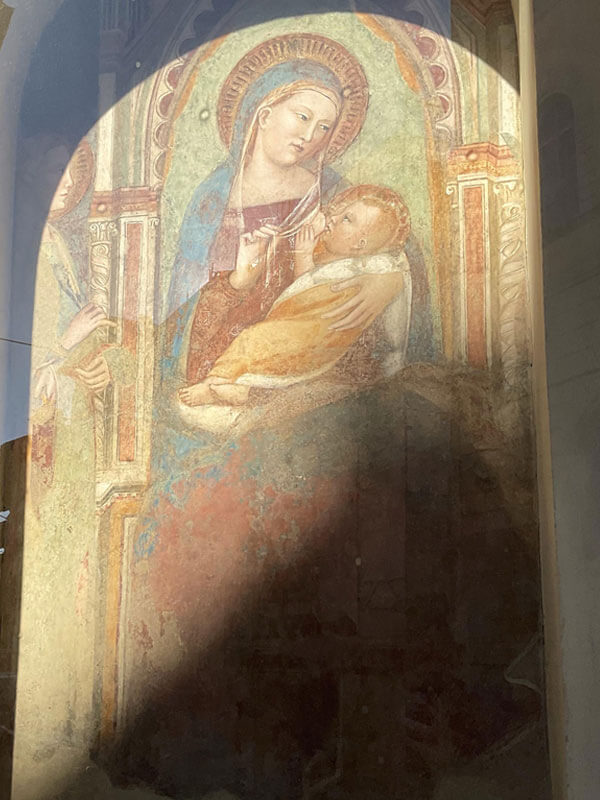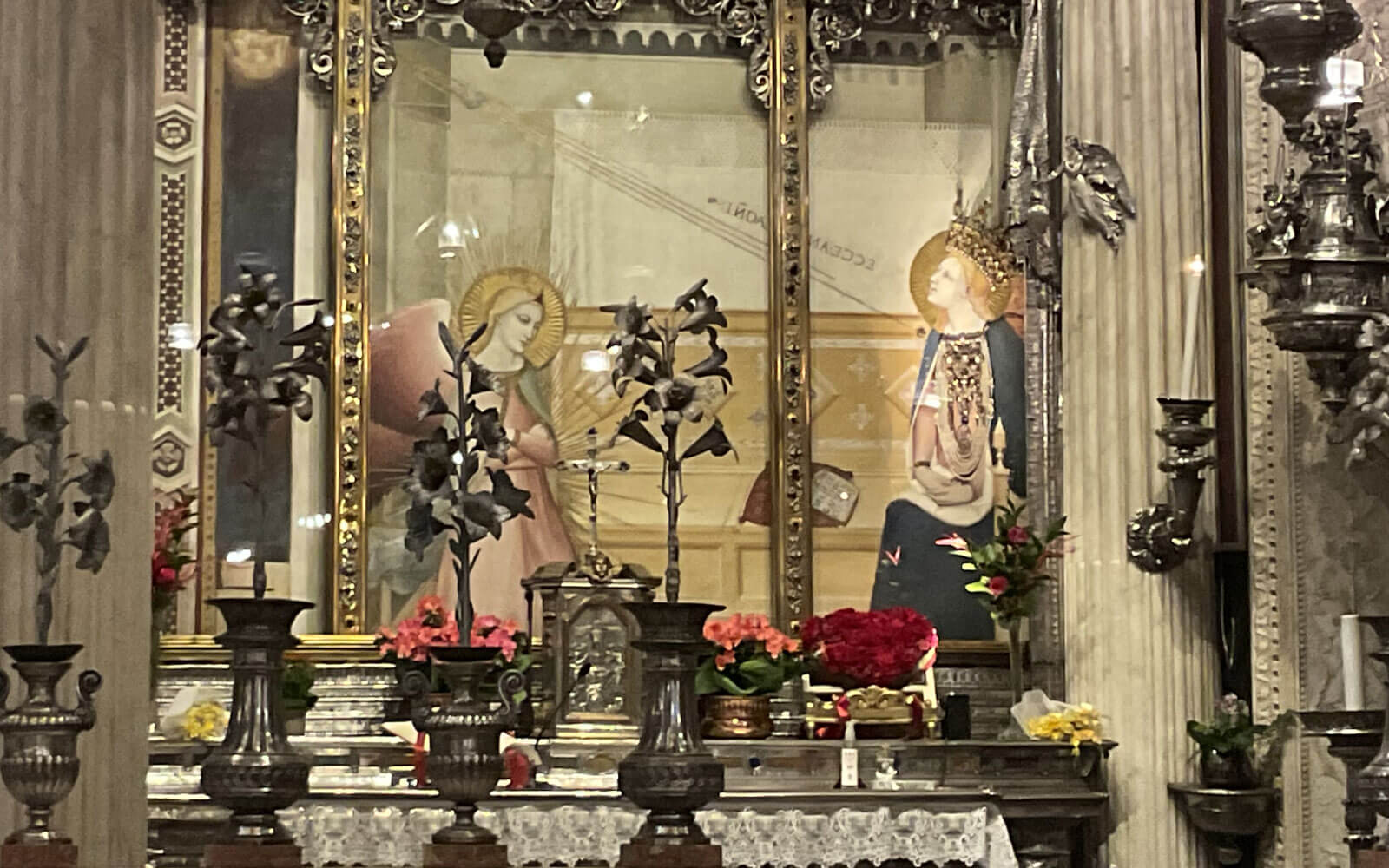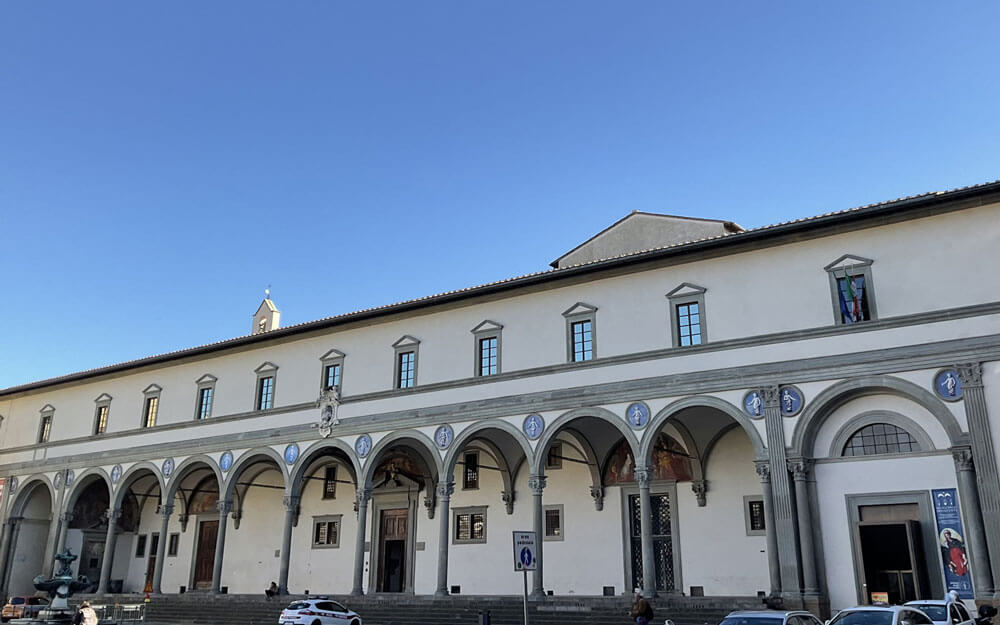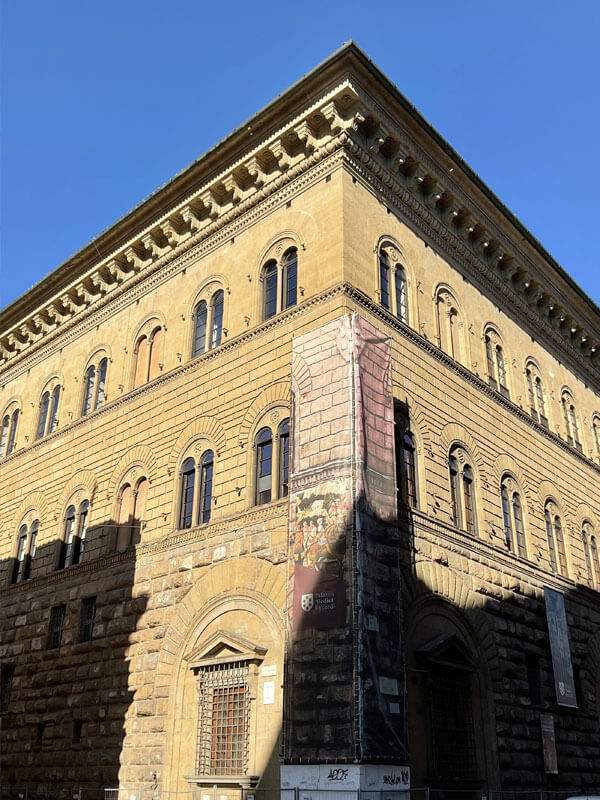Born and raised in Florence in the fifteenth century
A journey that starts from the Basilica della SS. Annunziata ( church of SS. Annunziata) situated in the beautiful SS Annunziata Square and will reach the “Procession of the Magi” in the chapel of the Medici’s private residence, Palazzo Medici Riccardi. You will be walked through the fifteenth and following centuries, its palaces and institutes for infancy and education of children during the early Renaissance.
Madonna acheròpita
You will become enthused standing in front of the “acheropita” face of the Madonna, while imagining Florence during the fifteenth century, a Florence which became one of the most famous reference points all over the world due to its assistance and education of new generations, nobles or orphans. The miraculous face of the Madonna “ made not by human hand”, while Fra Bartolomeo, the author of the fresco, being uncertain of how he would have represented her face , was sleeping in anguish. A pictorical miracle in the evangelical setting of the Annunciation of the Virgin Mary and mother.

The hospital of the innocents
It’s the first institution of this kind in Europe, designed to treat and raise orphaned or abandoned children and provide skills for their future life. The structure was built by Filippo Brunelleschi in 1419, also the author of Santa Maria del Fiore’s Chapel, less mysterious as a structure but certainly an avant-garde project for its social purpose.Palazzo Medici Riccardi
An imposing opera designed by the architect Michelozzo, and commissioned by Cosimo il Vecchio, progenitor of the Medici Family, upon his return from Venetian exile. This was not only the family’s city residence , but also the first true symbol of medici power: a treasure chest of architectural , figurative and sculptural wonders that marks the primacy in the future noble Florentine building in the renaissance.
Cappella dei Magi (The Magi chapel)
Private chapel for the religious celebrations of the Medici Family, who obtained for the first time in Europe, permission from the Pope to celebrate in private catholic rite functions. An environment finely frescoed by the painter and artist Benozzo Gozzoli, who in the occasion of Pope Pio II’s visit in Florence with Sigismondo Malatesta; lords of Rimini, and Galeazzo Maria Sforza from Milan, gives us a precious and spectacular historical testimony of a noble cultural and religious florentine society, and not only, throughout the sequence of pictures, known as, “the processor of the magi “in the chapel, that according to the Gospel, in the visitation of the three wise men to child Jesus, the faces and “le mode” of the society of the time are present in a photograph that truly transports us to the heart of the fifteenth century.
